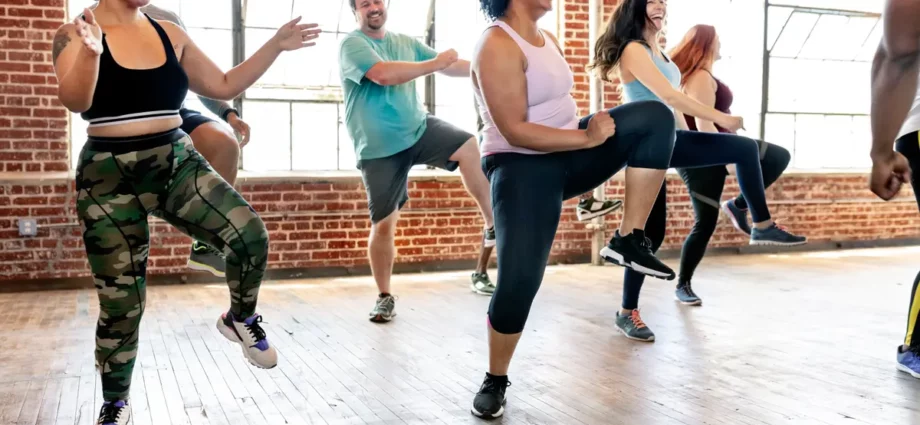Dance fitness has become increasingly popular, but some still believe it’s more fun than functional when it comes to achieving serious fitness goals. To dispel the myths, we spoke with Shwetambari Shetty, a Dance Fitness Master Trainer and Expert.
What is Dance Fitness?
Dance fitness is a fun, simple, and accessible workout. Shwetambari emphasizes that when people ask her where to begin their fitness journey, she often recommends starting with something they enjoy—and dancing fits the bill for most. Since people love music and dancing, it’s a natural choice.
A 30-minute session can burn between 130 to 250 calories, depending on how fast you move. “People often tell me, ‘That was so much fun,’” she says, adding that this enjoyment keeps them coming back and burning more calories effortlessly.
Health Benefits of Dance Fitness

While dance fitness feels light and enjoyable, Shwetambari warns against underestimating it. Each session is carefully designed with varied movements to engage multiple muscle groups. After just two weeks, participants often notice improvements in stamina, cardiovascular endurance, and overall energy levels.
In comparison to other workouts like HRX or Strength & Conditioning (SnC), beginners may find those options more intense and less motivating. Dance fitness, on the other hand, is easier to stick with, leading to significant fat loss and weight management over time. “The key to seeing results is consistency,” she adds, explaining that it’s easier for beginners to build a habit with dance.
Is Dance Fitness Just for Women?
Absolutely not. Dance fitness is suitable for people of all ages, genders, and fitness levels. While it’s especially popular among women aiming for weight loss, it offers something for everyone. Shwetambari notes that dance fitness isn’t just gentle—it’s scalable. Beginners, athletes, and sedentary individuals can all benefit from the same class by moving at their own pace.
“A lot of our instructors are men,” she points out, reinforcing that the workout is not gender-specific. The energy and variety make it engaging for everyone, and it provides a fun way to burn calories without the soreness some other workouts bring.
Dance Fitness for Advanced Levels
Even seasoned athletes can benefit from dance fitness. Shwetambari explains that any workout that raises your heart rate provides essential cardiovascular conditioning. She draws from her own experience competing in CrossFit events, where endurance from dance fitness helped her perform better.
“It’s great for improving heart health and respiratory function,” she says. Advanced athletes can enhance their cardiovascular endurance by adding 1-2 dance fitness sessions to their weekly routine.
Does Dance Fitness Build Strength and Endurance?
Although lifting weights builds muscular strength, endurance comes from performing exercises for extended periods—something dance fitness excels at. In classes, participants do moves like squats and lunges to the rhythm of music, increasing repetitions and improving muscular endurance. This helps train the body to perform longer without fatigue, complementing other strength-based workouts.
Tips for Getting the Most Out of Dance Fitness
The key to maximizing your dance fitness experience is familiarity. “The choreography and playlists don’t change drastically because the goal is to help participants focus less on the movements and more on performance over time,” Shwetambari explains. Once you’re comfortable with the steps, you can channel your energy into refining your movements for a more effective workout.
She recommends attending dance fitness classes 2-3 times a week for the first few months. Once you’ve mastered the basics, attending once a week is enough to maintain the benefits.
Precautions to Keep in Mind
Dance involves a lot of dynamic movements that engage the ankles and knees, increasing the risk of injury for individuals with weak joints. Shwetambari advises such individuals to consider more stable options, like HRX classes, which are designed with controlled movements.
Additionally, new participants should pace themselves in the beginning. “It’s easy to get excited and overdo it,” she warns. Instead of focusing on burning calories from the start, it’s better to observe the trainer and gradually build confidence.
Advice for Those Hesitant to Try Dance Fitness
Shwetambari acknowledges that many people feel self-conscious about their dance skills. “It’s normal to feel awkward initially,” she says, “but once you’re in the class, you’ll realize no one is judging you.” Everyone is focused on following the instructor or enjoying the movements, leaving little time to worry about others.
Her advice? “If you’ve ever wanted to try dance fitness but felt intimidated, just go for it. After a few classes, you’ll feel at ease and might even surprise yourself with how much you enjoy it.”
Final Thoughts
Whether you’re a beginner, advanced athlete, or someone simply looking to have fun while staying fit, dance fitness is a fantastic option. It improves cardiovascular health, builds endurance, and offers a calorie-burning workout without the monotony of traditional fitness routines. With the right mindset and consistency, anyone can enjoy the benefits of dance fitness.
